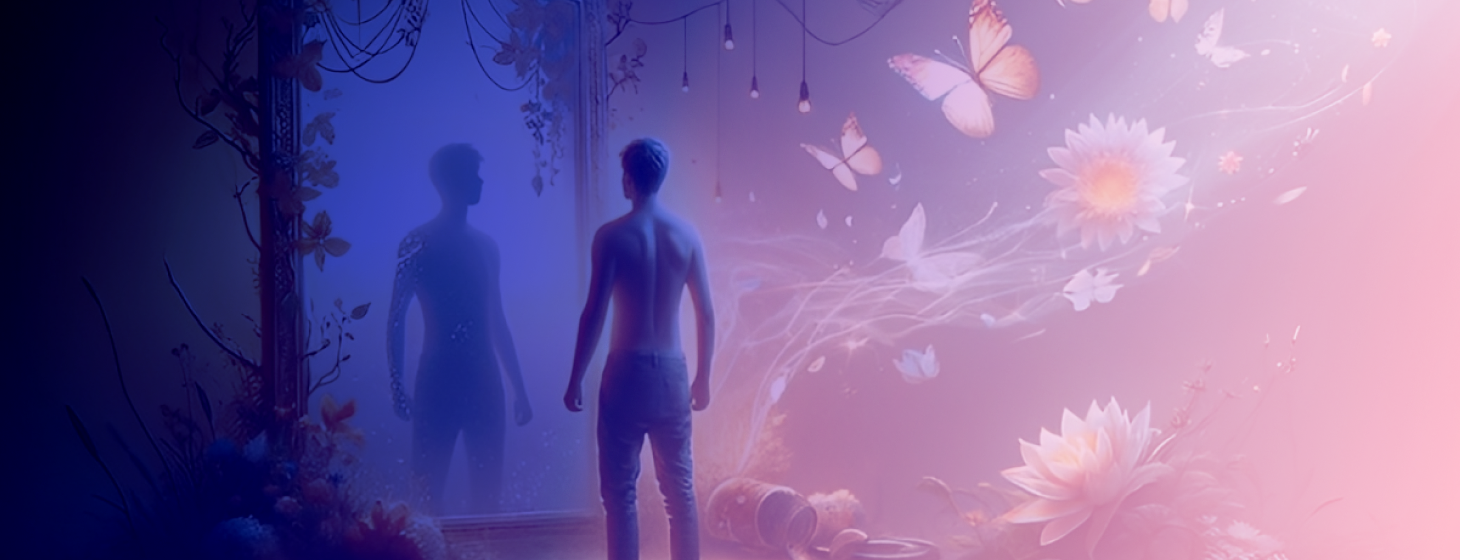Conflicted Views of Identity: From Body Dysmorphic Disorder to Self-Acceptance

In today's world, where social media rules most parts of our lives and beauty standards are changing, many people feel ‘so pleased’ about their appearances. The pressure to be physically presentable according to society’s standards is overwhelming. This makes people believe that something related to their physical appearance is missing and that they need to be “fixed” to get accepted and appreciated by society. That’s what Body Dysmorphia Disorder (BDD) does to you. It lowers your self-esteem to the extent that it feels like you’re never enough. However, the journey towards self-acceptance allows us to embrace our insecurities and flaws, linking us with the road to healing: self-love.
Sage M. Forman has talked about his struggles while dealing with Body Dysmorphia Disorder (BDD) in his memoir, Somewhere Between ‘JUST FINE’ and the Emergency Room.
The Struggles of BDD
It is a mental health issue that is often neglected by people, even though a significant part of our youth is dealing with it. The root cause behind BDD is low self-esteem. Those people who have severe appearance anxiety feel that their body is not acceptable just the way it is; they are always in search of ways to ‘fix’ themselves. For example, many times, people get their nose job done or get their complexion fixed just to become physically more attractive. People try to avoid social gatherings due to the fear of getting judged. But many times, the flaws that we think are prominent in our bodies are usually nonexistent or minimal for the people around us.
This affects mental stability to the extent that it consumes their personal lives. People indulge themselves in excessive grooming tactics and get cosmetic surgeries done just to satisfy their insecure selves. This constant need to reach high expectations results in negative thoughts. Imagine seeing yourself in a mirror; the reflection is not what you want to see. It’s like we are at a constant war with ourselves. People who suffer from this issue know how isolating, painful, and disturbing it gets for them.
With the advancements over the years, social media has shaped the youth’s mindset regarding beauty standards. People take their photos using filters, which makes their skin look flawless. They want to be valued in the world, but no one is flawless in real life. Social comparison creates severe rage among people, leading them to feel incompetent in their society.
Road to self-love
Meanwhile, BDD can be exhausting, but that doesn’t mean one cannot recover from this trauma. Gradually, we will be able to overcome this illness by accepting our flaws. Self-acceptance can’t be achieved overnight, but slowly, we will get through it. It is about learning to silence our inner negative thoughts that provoke us to think badly about ourselves and embrace our flaws.
There are various ways to cope with our illness, such as therapies. Self-acceptance group Therapy (SAGT) was developed as a transdiagnostic shame-focused treatment based on a cognitive-behavioral framework. SAGT is an 8-week treatment that involves psychoeducation and training in the use of cognitive and behavioral shame regulation and support-building skills to promote self-acceptance.
However, healing cannot be done through therapies only. To overcome illness, we need to focus on ourselves. Celebrate our small wins, compliment ourselves, and let go of things that are ruining our mental peace. We should try to avoid comparing ourselves with others. Natural beauty is not defined by flawlessness but lies in our vulnerabilities. When we let go of the need to look perfect all the time, we will start to embrace ourselves. Through this shift in our paradigm, we can heal from the trauma within and walk toward the road to self-acceptance.
© 2025 Sage M. Forman. All rights reserved. Terms & Conditions